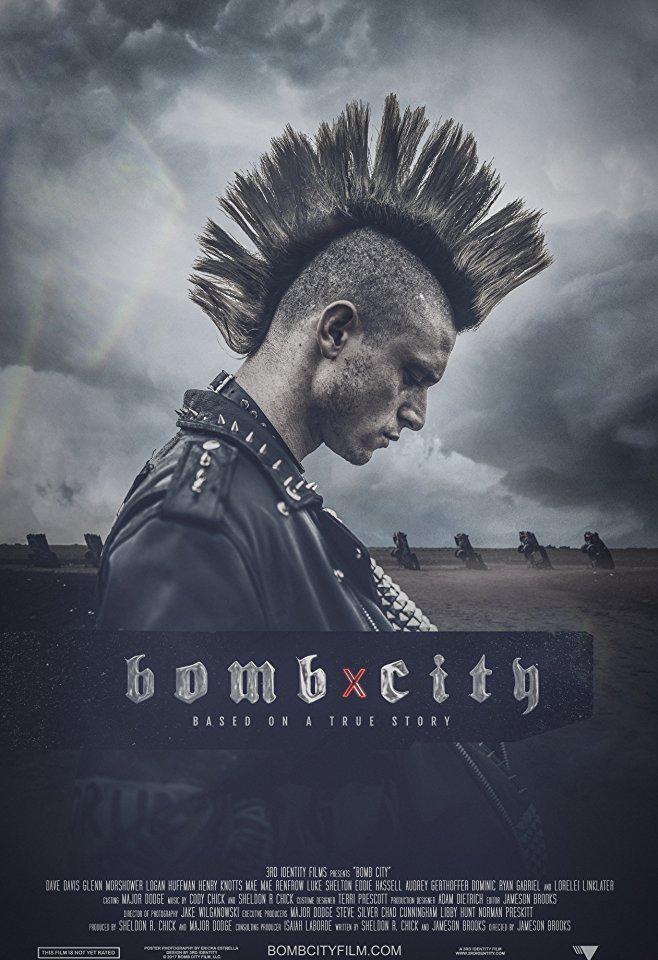
posters
"Bomb City" (2018) is based on true events, killing Matt's hairstyle, lifestyle, causing conflict, and being crushed by a car:
Still
The lawyer was clever and the murderer was acquitted.
Clothing and hairstyles are not minor issues. Because of the reluctance to leave an ugly pig's tail behind their heads, how many heads have landed!
Everyone may have a demon lurking in their hearts, and the tolerance and tolerance of killing Matt and non-mainstream show the degree of civilization of mainstream society. You can not like, punches and kicks together is too much.
I am pompous, I am ostentatious, I exist, I am willing. You didn't come into this world to please anyone, and so did others. We oppose only one freedom, the freedom to infringe on the freedom of others. Don't look at your own worthless recognition and sympathy as so noble.
Maturity is a process. Youthful madness is not a sin:
Rock
Let the years pass punk still, always young, never compromise.
Only killing Matt and small fresh meat is not normal, and only Nietzsche is also not normal. The normal world is full of purples and reds, a hundred flowers blooming, and the tide is a state of mind.
tide
Anger influenced the expression of City of Bombs. The genre first recommended Hopper's "Runaway Knight" (1969):
After Wild Strawberry (1957), "Runaway Rider" once again established the special status of road movies, pushing the non-mainstream to a peak, forcing Hollywood to carry out a major change of management system and personnel to adapt to the aesthetic needs of the new new human beings.
Road movies, of course, don't simply show the scenery along the way.
The highway is filled with the common struggle, confusion and hope of mankind, the unpredictable journey, and the nobility and cruelty of human nature;
The highway as a symbol, a huge metaphor, hints at the self-salvation of human beings who never give up: no matter how far the road has an end, even the crazy song and dance will stop, and the free heart will always be young.
In the 1960s, American youth advocated a simple, free, and peaceful way of life, anti-Vietnam War, anti-authority, anti-tradition, and searched for self and meaning in life on the road.
The Runaway Rider is a true record of this era. Masculine and dynamic Harley-Davidson represent American road culture, spectacular Western scenery and rock 'n' roll, long hair and maverick costumes, marijuana, spirits, cynicism, all in an outcry against a world wrapped in war and political scandal.
There is an intriguing long shot, where the faces of people in various skin tones and cultural backgrounds are naturally presented one by one in the shot:
freely
Contemplation, yearning, tranquility, sorrow, joy, solemnity, holiness, sculptural sense is very strong, as if history is condensed in these noble, vivid faces.
Jack Nicholson was 32 years old at the time, playing a small lawyer who was an alcoholic, with limited appearances, but the potential of a big actor was revealed, creating the most moving image of an alcoholic in the history of film.
The Runaway Knights were not welcome anywhere, Nicholson said: they felt threatened, they were afraid of what you represented: freedom.
The lawyer was killed by a wooden stick in his sleep, and his innocence and kindness also made it difficult for this vulgar society to accept.
The bizarre death of the Runaway Knight at the end of the film is even more a sad indictment: just because they are not accustomed to their hairstyles, an American farmer shoots at them, and the nightmare in the hallucination becomes a bloody reality:
Video loading...